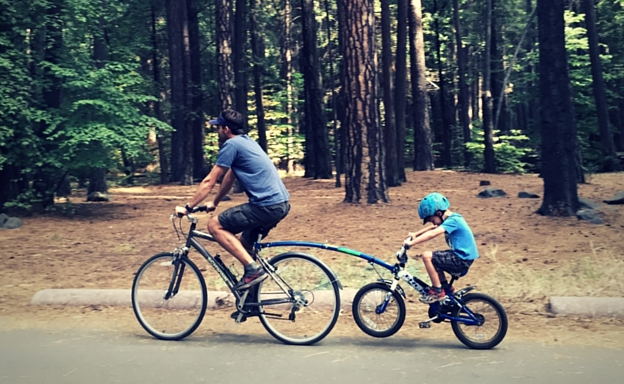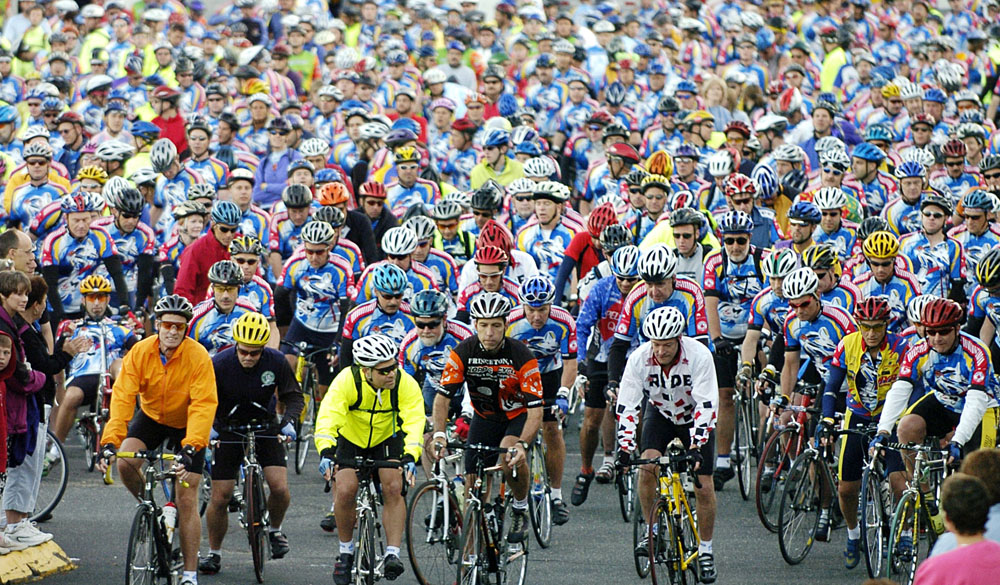 As I walked to the train station the other day after work, I was passed by a man on a bike towing a small girl. It was one of those arched tow bars that allows the child to pedal away on hers and therefore contribute to the forward movement of the bikes…if so inclined…this young girl was not. As the man on front (I presume her father) pedalled hard she had her feet off the pedals, swinging her arms. Happy to follow, happy to let her Dad propel. I had a little chuckle based on my own experience of riding a tandem bike but also because it struck a chord with a dynamic in therapy work, one that had come up in discussion just that afternoon in a supervision session I had just facilated.
As I walked to the train station the other day after work, I was passed by a man on a bike towing a small girl. It was one of those arched tow bars that allows the child to pedal away on hers and therefore contribute to the forward movement of the bikes…if so inclined…this young girl was not. As the man on front (I presume her father) pedalled hard she had her feet off the pedals, swinging her arms. Happy to follow, happy to let her Dad propel. I had a little chuckle based on my own experience of riding a tandem bike but also because it struck a chord with a dynamic in therapy work, one that had come up in discussion just that afternoon in a supervision session I had just facilated.
This group of supervisees have recently qualified as counsellors and are building up their private practice and work in the voluntary sector. We were reflecting on client groups that felt easeful versus those that represent more of a challenge; each had their own experience of this, and we talked about opportunities to develop a ‘niche’; a reputation in a given field of therapeutic work. We talked about how our own personal story, patterns in development, and indeed our own version of a wound influenced who we felt resonant with or distanced from. This can be the very essence of the wounded healer. Jung explained this as the compulsion to heal because we ourselves are wounded; if we take that further, we perhaps are compelled to heal those who share a similar wound. I have certainly reflected upon this as a therapist / Buddhist. I have experienced a sense of ‘lack’ when the paths could not be woven together. Therapists who didn’t know the language, and skeptical tutors encountered in my therapy training. More latterly, I have found others who respect, appreciate and utilise both in their understanding of what it is to be human and have experienced the healing power of that synergy. This has proved my inspiration to how I want to practice; and with whom I feel I can help the most. I want to provide to others what I once lacked.
Undoubtedly in the group of therapists the other afternoon, a common factor in the ‘niche’ areas being discussed was a sense of ‘client agency’: a wish to work with clients willing to work, clients who whilst blocked and struggling had the capacity to look inward and see what their contribution was to that struggle. In other words, clients with sufficient self-awareness and curiosity to engage in the therapeutic act as dialogical and dialectical. Peter Fonagy called this mentalization: the ability to reflect upon, and to understand one’s state of mind; to have insight into what one is feeling, and why. In this regard, mentalization is considered an important coping skill that is necessary for effective emotional regulation.
How does this relate to the father and small girl on their bikes?
Therapy is not an individual pursuit or a lone cyclist; a client comes to therapy because they need help in seeing what they are caught up in. The Other provides a separation in which can be found a relationship-to rather an involvement-in the struggle. The Other’s presence is needed to hold, contain, and reflect. In ‘good’ therapy, the therapist doesn’t need to steer the process. The client may not know which direction they want to head in, but they certainly take (or gain the confidence to take) hold of the handlebars. Every now and again, acting like a GPS, the therapist might check in with where the client is and where they want to go – but it is supportive, not directive. In this type of therapy, the client is also providing most of the power to move forward. The therapist does aid the forward momentum, but not by pedalling FOR the client, but rather we might help the client notice where the brakes are on, or how a client may pedal more efficiently. To take a cycling turn of phrase – sometimes our clients pedal in squares!
In the past, I have worked with clients who expected me to do the pedalling and in fact, expected me to do the steering too – a bit like this little girl towed by her Dad. Our clients might be quite caught up in a child-like process – they need a kind of parental help to find stability in their world, stabilisers on the back wheel or a steel tow bar. As a therapist in a re-parenting type role, it can be fine to accept the client’s need for this tow, but we help the client bring this need in to awareness and then help them look to take over the steering wheel of their lives. After all, the therapist cannot be with the client 24/7 – they have to learn to pedal alone and take responsibility for the direction of travel.
Of course, it isn’t always as simple as that. Some clients are used to taking control or used to pedalling more in relationships. Perpetual care givers or those needing to please others are but one client group. And, it can be easy toconfuse the compliant client with the client we like to work with. I had a tutor who would always say – be wary of the clients you like, the ones you look forward to seeing each week, and who you never feel the need to take to supervision. In effect the risk is WE become the ones on the back of the tandem, free wheeling and being steered or manoeuvred. Therapy can feel easy with these clients because it is a well oiled chain. How do we ‘help’ those clients who want to help us? How do we ask them to programme the GPS with the destination and not accept the invitation to let us decide?
 I’m in danger of stretching this metaphor too thin. But, I hope you see the message here. Good therapy is client and therapist working in tandem. Toward the end of the therapy, it might feel more like two riders of equal capacity riding side-by-side. Yes, at times the client might need words of encouragement up that steep and unexpected hill, or even a slight guiding hand to the back; they might even need to sit in behind the therapist and ‘draft’ when things get incredibly tough. We might also provide a map or a willingness to discuss route options. But eventually, as decided by the client, they become ready to leave the 2-abreast scenario and enter life’s peloton – practicing what they have learnt in the room when riding within a group or community of others.
I’m in danger of stretching this metaphor too thin. But, I hope you see the message here. Good therapy is client and therapist working in tandem. Toward the end of the therapy, it might feel more like two riders of equal capacity riding side-by-side. Yes, at times the client might need words of encouragement up that steep and unexpected hill, or even a slight guiding hand to the back; they might even need to sit in behind the therapist and ‘draft’ when things get incredibly tough. We might also provide a map or a willingness to discuss route options. But eventually, as decided by the client, they become ready to leave the 2-abreast scenario and enter life’s peloton – practicing what they have learnt in the room when riding within a group or community of others.
